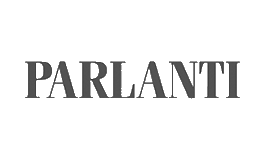
About the USHJA
Mission Statement
The mission of the USHJA is to unify and represent the hunter and jumper disciplines of equestrian sport through education, recognition and sport programs.
Vision Statement
Our vision is to increase awareness of and participation in programs and services for all involved in hunter/jumper competitive sport. We strive to provide value to our community such that USHJA is the pathway to excellence and education in equestrian sport.
Value Proposition
The USHJA provides to its membership competition programs, awards and recognition, educational programs, and experiential opportunities. The competitive programs are appropriate and accessible to all levels of hunter/jumper sport. The Association distributes awards and recognition to competitors through championship events and year end awards in a wide variety of divisions and skill levels. We promote fair sport, sportsmanship and horse welfare. Through our governance structure, the USHJA provides representation, advocacy and regulatory input.
History
The USHJA was conceived at a breakfast meeting during the July 2003 USEF Board of Directors meeting in Lexington, Kentucky. At this meeting, a small group agreed that it was the right time to form an organization that would represent all levels of hunter and jumper participants under the umbrella of USEF. Steering and Advisory committees were created to help in the formation of this organization.
The Steering Committee met in Newark, New Jersey, on November 3-4, 2003, to formalize the development of a national organization to represent the interests of the hunter and jumper community. Steering Committee members present were Louise Serio, Geoff Teall, Louise Otten, Chrystine Tauber, Archie Cox, Beth Miner, Tracey Weinberg, Bill Turner, Mindy Darst, Debbie Bass, Jeff Wirthman, Judy Richter, Wilson Dennehy, Marianne Kutner (Legal Counsel), Bill Moroney, Sue Pinckney (USEF Liaison), Michele Perla (AHJF Liaison) and Event Facilitator Kathy Meyer.
In spending two days together, Kathy guided this group through the development of the organizational structure, objectives list and strategic plan for execution of these objectives. A mission statement was also refined to read as follows:
The mission of the USHJA is to unify and represent the interests of all levels of participants in order to promote and enhance the hunter/jumper discipline and provide educational experiences in a manner that will benefit both horses and members.
Included in the mission statement are some of the key reasons for formation of this organization:
1. To keep the hunters and jumpers together on a national level.
2. To better educate all levels of hunter and jumper participants.
3. To benefit the welfare of the horses.
4. To represent all levels of hunter and jumper participants and give these participants a voice in their governance.
5. To promote inclusion of participants from all levels in the organization.
6. To help govern the hunter/jumper discipline through a more cohesive and efficient rule change process.
In 2004, information about the USHJA was distributed through the efforts of the Steering Committee members and horse shows that offered to have the USHJA membership brochure available to their exhibitors. Hundreds of committed individuals supported the development of the USHJA by joining as Founding Life Members.
During recent years, and especially throughout 2004, there was considerable talk about the fact that the hunter and jumper disciplines should have their own nationally recognized affiliate organization to represent the disciplines from the bottom to the top and the top to the bottom. This organization would build bridges between the international, national, state, regional and local levels within our sport. It would bring the participants together to form a community within the hunter and jumper disciplines. The organization would address the needs of the different levels of the disciplines as well as include the opportunity for representation from all levels in its governance structure and work to meet the needs of each facet of the sport. The organization would create an educational system so that parents, riders, trainers, owners, grooms and any other interested parties have the opportunity to enhance and increase their knowledge about the various aspects of the hunter and jumper disciplines.
This is where the USHJA came in to play. The USHJA offers the opportunity through representational governance for the interested and committed hunter and jumper participants from every level to participate in where their sport is going and how it is getting there. The USHJA reaches out to their affiliate organizations by offering them a seat on the Affiliates Group for each of their Presidents. This Affiliates Group shall elect two members to the Board of Directors of USHJA. The USHJA also has a participation policy requiring attendance and has a clause for removal of anyone from a seat for not performing his or her duties in accordance with the USHJA Bylaws.
The USHJA accomplished all of its early goals since the November 2003 retreat including the following:
- Incorporation in New York State
- Obtained a Tax ID Number
- Established Bank Accounts
- Established a Business Address
- Established an Administrative Address
- Created a logo and service marking of the logo and organization name
- Created Bylaws
- Received support from the Founding Life Members
- Secured Affiliate Organization Members – more than 60 as of April 2005
- Applied for National Recognition with Federation as hunter and jumper
- Hired two staff members
During the July 6, 2004, USEF Board of Directors meeting, Bill Moroney, President of USHJA, and Gary Baker, President of the National Hunter and Jumper Association, delivered presentations from their organizations. Following a comprehensive discussion by the USEF Board of Directors, they voted to recognize the United States Hunter Jumper Association, Inc., (USHJA) as the National Affiliate for the hunter and jumper disciplines.
In November 2004, the First Annual USHJA Convention was held in Tucson, Arizona, where more than 160 people attended.



